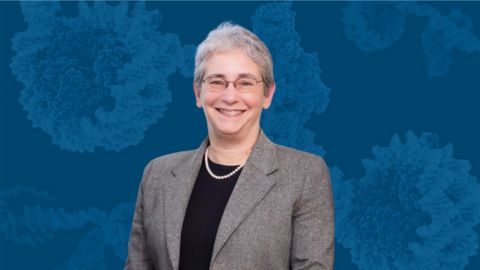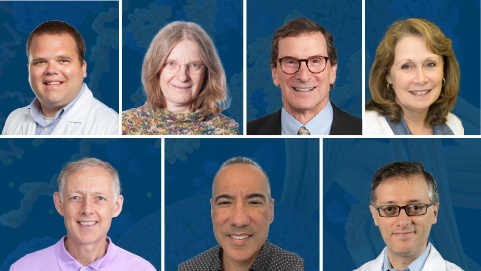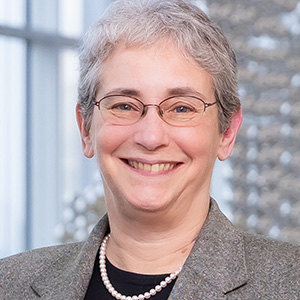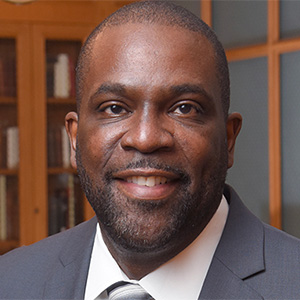Investing in the future of discovery
We are living through an unprecedented moment for science — one with both extraordinary opportunities for accelerated discovery in academia and industry and significant pressures that are challenging science and changing how professional societies serve it. The American Society for Biochemistry and Molecular Biology is not immune to these challenges and changes, but we are also positioned to navigate them wisely. With the evolving needs of members across different sectors, changing revenue streams, continued expense growth, and uncertain markets, ASBMB must strategically reflect on how to modernize and innovate to continue thriving at this pivotal moment.
It’s in this context that we share important news about ASBMB’s work to chart its direction. Simply put, while the ASBMB’s reserves have allowed the society to operate in the short term with a growing deficit, they are not a viable long-term strategy. Thus, ASBMB’s Council has approved a new five-year financial framework that will strengthen the society for the future. The framework relies on two essential pillars: the first will invest boldly in new programming to transform our ability to serve our mission and expand our community, while the second will forthrightly address significant changes in our annual financial operations that would stymie our mission if we do not acknowledge and address them.
Thanks to prudent stewardship and strong investment practices established by past leaders, ASBMB has built healthy financial reserves that provide the opportunity to invest in growth and innovation. Because of this, we’re in a strong position to fund new programs that can drive the society’s scientific impact and financial performance, taking smart risks and broadening our impact for the molecular life sciences community. We will focus these initiatives on “win–win” models of programming that serve the community and drive the program revenue that is important to ensure the society’s long-term health.
At the heart of this component is the creation of an Innovation Fund, anticipated to provide up to $2 million per year for five years, beginning in 2026. This fund is designed to identify and support the initial launch of fresh, innovative initiatives that revitalize the society’s core value to our members and generate net revenue that we can reinvest back into the society’s nonprofit mission. These could include offerings like specialized training programs tailored to emerging fields, robust online courses serving a broad range of scientists, partnerships that grow ASBMB’s reach and other innovative approaches to drive emerging science in all sectors. The fund will be carefully managed with a policy developed by ASBMB’s Finance Committee and Council, which will evaluate emerging opportunities from Council, staff, committees or other key stakeholders.
As an equally key component of the new framework, the ASBMB Council is initiating essential measures to address the society’s growing operating deficit by capping it at $5 million per year and reducing it to a more sustainable level over time. Key changes to our business model in recent years — including moving our journals to gold open access in 2020 and the launch of a new independent meeting — shifted our revenue, while our spending patterns have remained the same or grown. This resulted in a $5 million deficit in 2024 that, if left untended, could grow substantially. While Council anticipates that a reserve-funded deficit will continue for some time, it must be contained and focused on supporting the highest-priority non-revenue generating programs.
Addressing the deficit through the second pillar of the financial framework will require thoughtful work by Council, staff and committees to review current programming and expenses, asking questions like: Where can ASBMB have the greatest impact? Where could we redirect resources to maximize member value, and where does that mean we adjust existing programming? By making careful, forward-looking decisions now, we can focus our resources on the initiatives that deliver the greatest benefit to scientists and the people helped by their discoveries.
There’s a saying that you can’t cut your way to growth. While tightening and modernizing our operations to ensure maximum impact is an important part of this plan, the real promise of this framework is its potential to invest in evolution that expands our impact and value for today’s scientists and for generations to come. We are honored to serve as ASBMB leaders at a time when meaningful change is both needed and can be made. We, and all of the ASBMB Council, are undaunted and indeed energized by the important work ahead. We thank you for your participation in this important journey to ensure ASBMB can effectively help catalyze the infinite potential of the molecular life sciences.
Enjoy reading ASBMB Today?
Become a member to receive the print edition four times a year and the digital edition monthly.
Learn moreGet the latest from ASBMB Today
Enter your email address, and we’ll send you a weekly email with recent articles, interviews and more.
Latest in Society news
Society news highlights or most popular articles

2026 voter guide
Learn about the candidates running for Treasurer-elect, Councilor and Nominating Committee.

ASBMB launches Insights in Biochemistry and Molecular Biology
The new journal will be helmed by Benjamin Garcia as inaugural editor-in-chief and will start accepting submissions in early 2026.

Accelerating breakthroughs with artificial intelligence
Scientific progress builds on itself, each breakthrough fueling the next. We explore how AI is accelerating discoveries in research and education, and how ASBMB is preparing to spotlight its impact at the 2026 annual meeting.

ASBMB Council roundup: August 2025
They discussed financial planning, membership types, higher education trends and society publishing.

ASBMB to combine Regular and Industry member types
The newly created Professional member type will offer all the current benefits of Regular and Industry membership.

Top reviewers at ASBMB journals
Editors recognize the heavy-lifters and rising stars during Peer Review Week.


